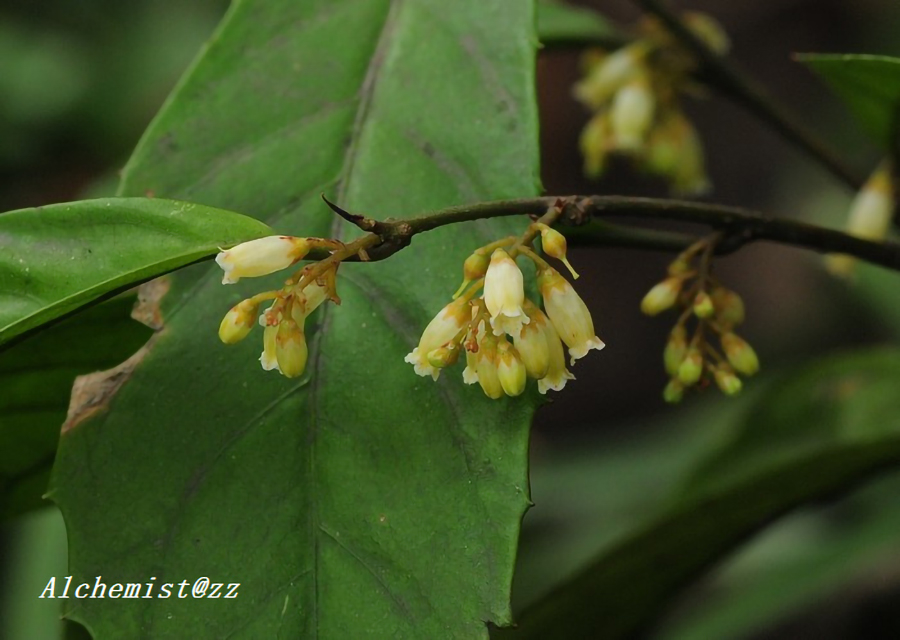- Scientific Name: Maesa japonica (Thunb.) Moritzi ex Zoll.
- Ref: Syst. Verz. Ind. Archip. 1:61. 1854
- English Common Name: Japanese Maesa
- Chinese Common Name: 杜茎山 dùjīngshān
- Japanese Common Name: イズセンリョウ [伊豆千両] Izu-senryō
- Family: Primulaceae
- Genus: Maesa
- Distribution: Mixed forests, hillsides, limestone mountains; 300-2000 m. Anhui, Fujian, Guangdong, Guangxi, Guizhou, Hubei, Hunan, Jiangxi, Sichuan, Taiwan, Yunnan, Zhejiang [Japan, N Vietnam]
- Photo: 03/31/2013
Shrubs erect, sometimes decumbent or scandent, 1-3(-5) m tall. Branchlets terete, apex glandular granulose, early glabrescent; pith solid. Petiole canaliculate, 5-13 mm; leaf blade elliptic, lanceolate, to obovate, 5-16 × 2-5 cm, leathery, inconspicuously pellucid punctate, base cuneate or obtuse to rounded, smooth adaxially, margin entire toward base and subentire to serrate distally with mucronate teeth, apex acuminate to acute or obtuse; lateral veins 5-8 on each side of midrib. Inflorescences axillary, racemose or paniculate, 1-3(-4) cm, glabrous; bracteoles broadly ovate or reniform, to 1 mm, dark punctate-lineate, ciliate, encircling pedicel. Flowers white, 3.5-5 mm. Pedicel 2.5-3.5 mm, glandular granulose, glabrescent. Calyx ca. 2 mm; lobes ca. 1 mm, ovate to orbicular, punctate-lineate, margin entire, ciliate, apex obtuse or rounded. Corolla white, tubular-campanulate; tube 3-4 mm, prominently punctate-lineate; lobes reniform or ovate, ca. 1 mm, apex rounded or obtuse. Stamens included; anthers ovate, as long as filaments, glandular on back. Pistil included. Style slender, persistent, conical at base in fruit; stigma lobed. Fruit globose or ovoid, 4-5(-6) mm in diam., fleshy, punctate-lineate. Fl. Jan-Mar, fr. Oct-May. (Flora of China)
